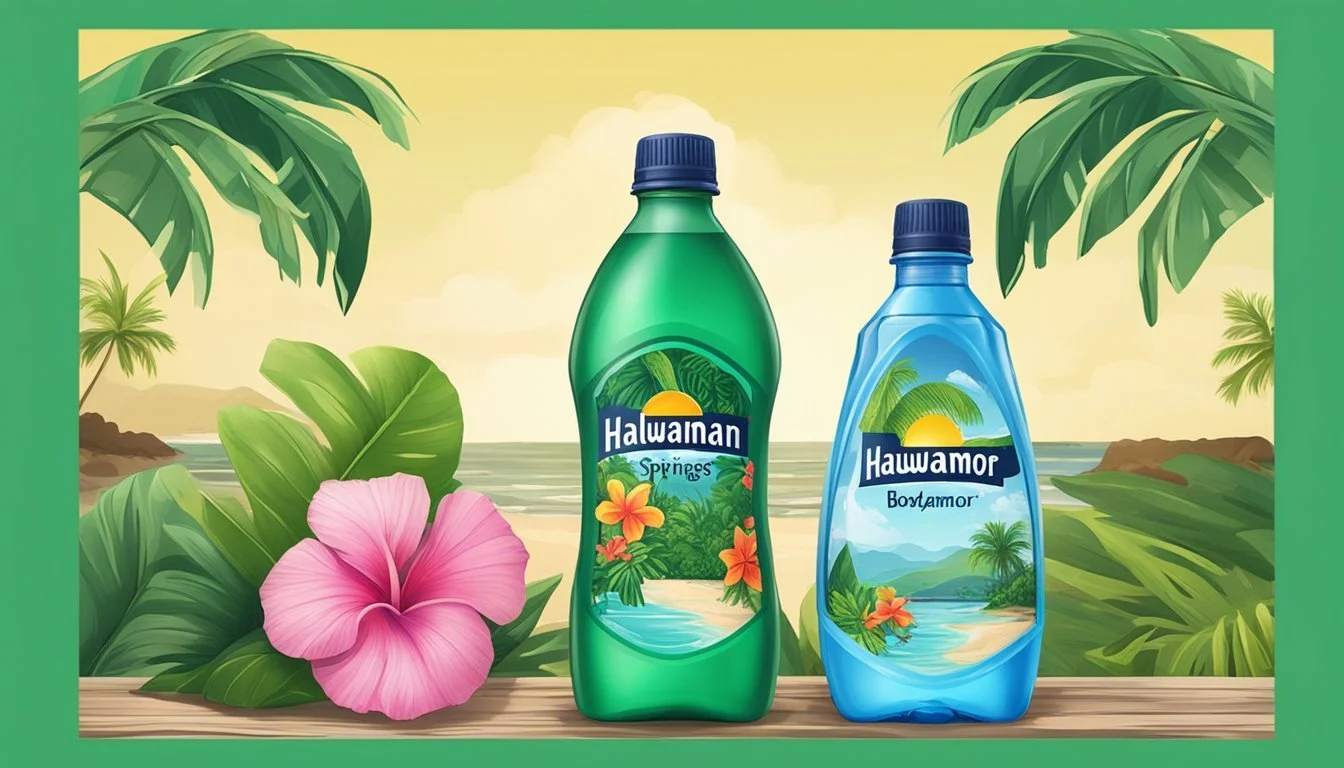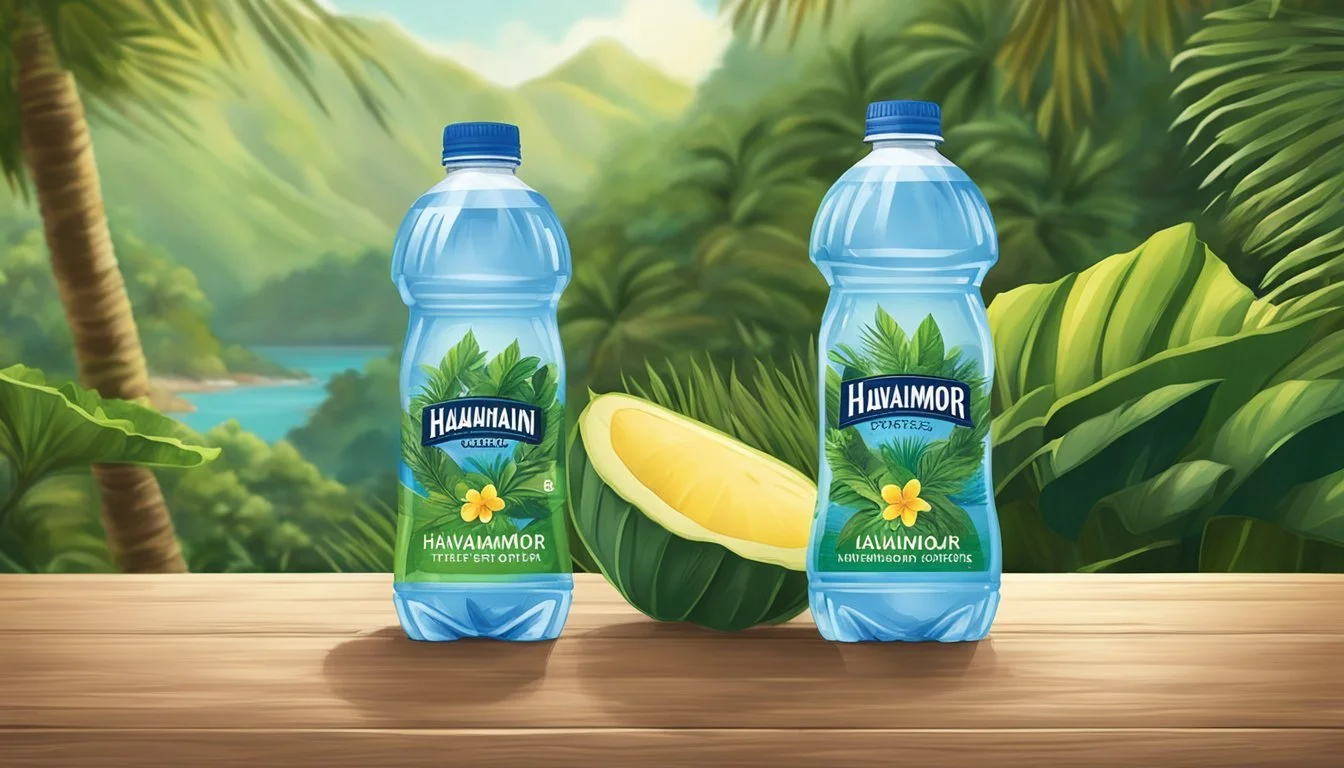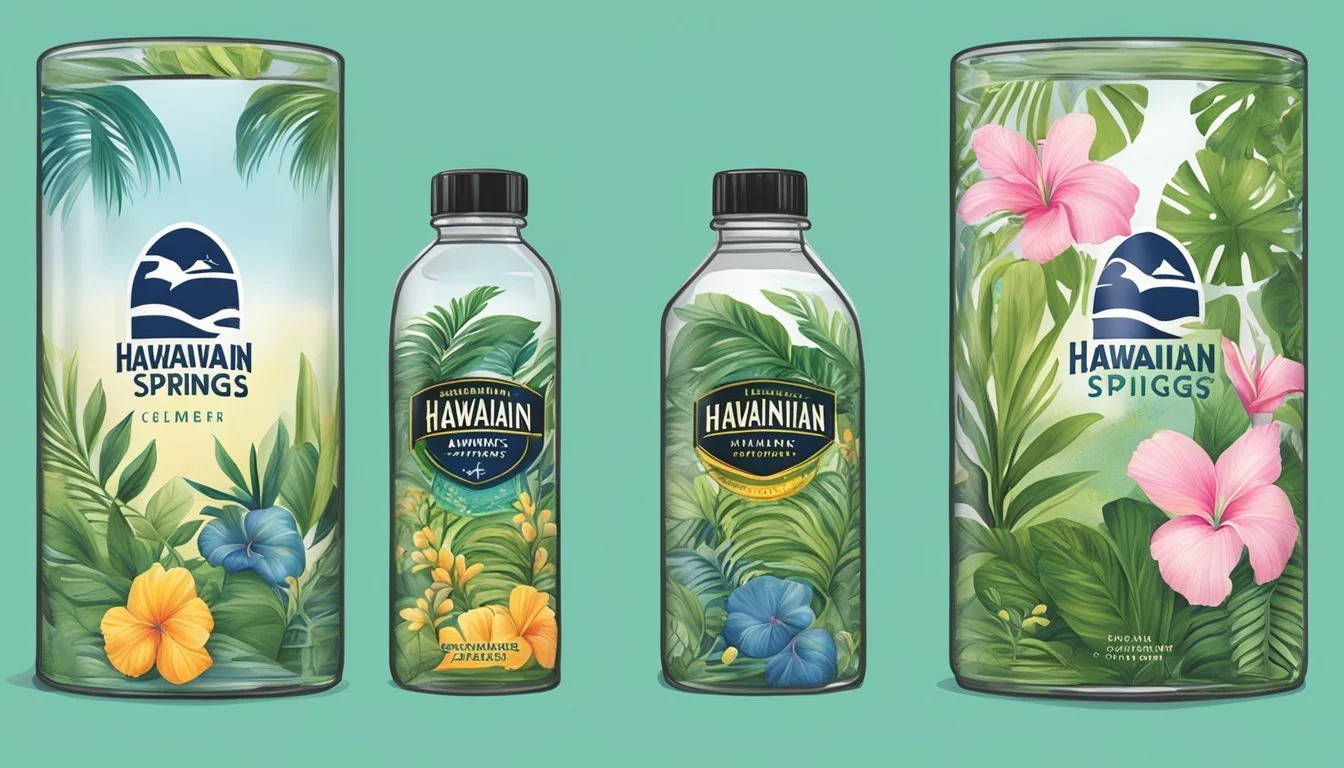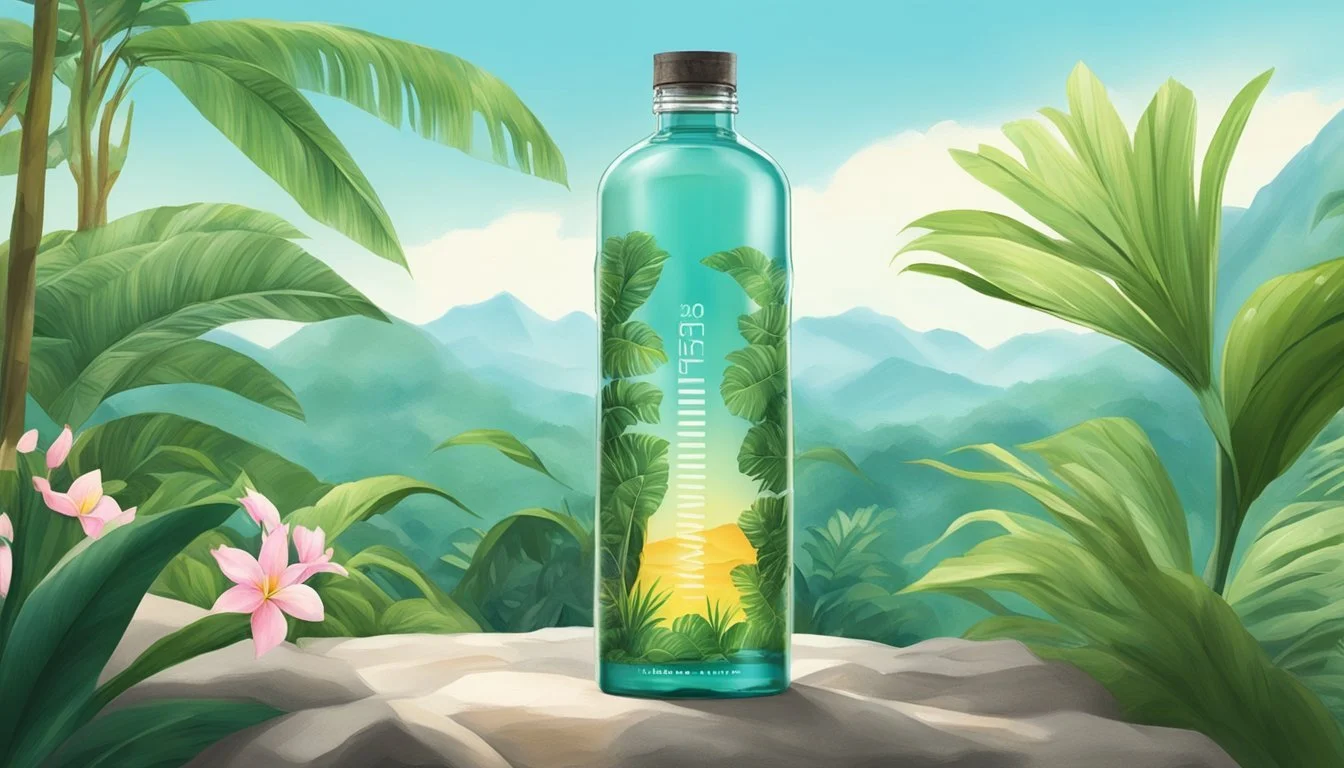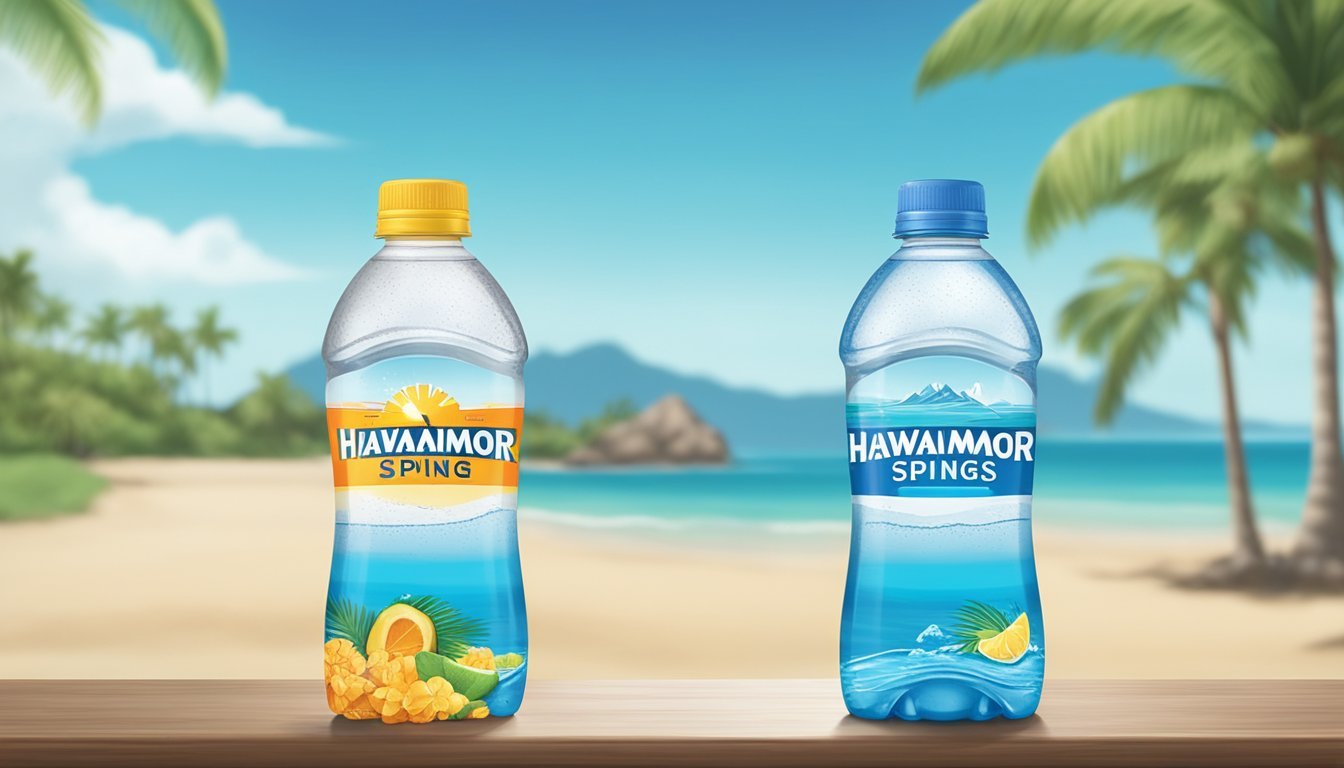Hawaiian Springs vs. BodyArmor
Comparing Bottled Water Brands
Consumers often face a dilemma when choosing between bottled water brands, especially when tasked with deciding between Hawaiian Springs and BodyArmor. Hawaiian Springs, known for its pristine origin from Hawaiian rainwater, offers a naturally alkaline option that prides itself on being free of contaminants. On the other hand, BodyArmor, primarily associated with sports drinks, emphasizes hydration with added electrolytes to enhance physical performance.
For those seeking a pure, natural source of hydration, Hawaiian Springs stands out with its clean taste and natural alkalinity. Conversely, BodyArmor caters to active lifestyles, providing a boost with its electrolyte-enhanced composition. These distinct characteristics cater to different consumer preferences, whether one desires a simple, refreshing drink or an effective hydration solution post-workout.
Understanding the unique qualities of each brand is crucial in making an informed choice. Hawaiian Springs offers a tranquil drinking experience, while BodyArmor ensures replenishment after intense physical activity. By considering these attributes, consumers can select the bottled water that best fits their hydration needs and lifestyle.
Understanding Bottled Water
Bottled water comes in various forms, each with unique characteristics and benefits. It's essential to distinguish between these types to make an informed choice about what best suits personal needs for hydration and health.
Types of Bottled Water
Spring Water: Sourced from natural springs, this type contains minerals present in the water source. It is typically untreated beyond filtering and purification to remove debris.
Purified Water: Originating from any source, this water undergoes processes like distillation, deionization, or reverse osmosis to remove impurities. It often lacks natural minerals.
Alkaline Water: This water has a higher pH level, generally above 7. Purported benefits include better hydration and neutralization of body acidity.
Artesian Water: Drawn from confined aquifers, artesian water is bottled directly from the source, retaining its natural minerals.
Health Benefits and Hydration
Bottled water is convenient for maintaining hydration, especially on the go. Proper hydration helps maintain bodily functions, from temperature regulation to joint lubrication.
Electrolytes in some bottled waters can help replenish minerals lost through sweat. Athletes may benefit from these added electrolytes for faster recovery.
Alkaline Water supporters claim it aids in neutralizing stomach acid and reducing acid reflux. However, these claims can vary based on individual body chemistry.
Purified Water is free from contaminants like lead, making it a reliable choice for safety-conscious consumers.
Minerals and Electrolytes in Water
Minerals: Bottled waters like spring and artesian contain naturally occurring minerals such as calcium, magnesium, and potassium. These minerals contribute to the taste and nutritional benefits of the water.
Electrolytes: Essential for nerve function and muscle repair, electrolytes like sodium and potassium are often added to bottled waters. This is particularly appealing for active individuals needing to restore balance after intense activities.
TDS (Total Dissolved Solids): Indicates the concentration of dissolved substances in the water, which can include salts and minerals. A higher TDS often correlates with richer mineral content, influencing both taste and health benefits.
Understanding the types, health advantages, and essential elements in bottled water empowers consumers to make informed hydration choices.
Comparing Water Brands
Hawaiian Springs and BodyArmor represent distinct choices in the bottled water market, catering to different consumer preferences. Each brand's unique attributes and historical development illustrate their distinct market positioning.
Brand Overview: Hawaiian Springs
Hawaiian Springs water comes from the artesian wells of the Big Island of Hawaii. The brand emphasizes purity and natural filtration through volcanic rock, providing water with a distinctive mineral content.
Hawaiian Springs highlights its commitment to environmental sustainability, using eco-friendly bottling practices. This water is often noted for its crisp taste and high quality, making it a popular choice among consumers who prioritize natural and premium water sources.
Brand Overview: BodyArmor
BodyArmor offers more than conventional hydration; it positions itself within the "enhanced water" category. This water is known for its alkaline properties and added electrolytes, marketed as beneficial for active lifestyles and athletes.
BodyArmor promotes its product as superior due to advanced filtration and ionization processes. The brand often collaborates with sports personalities to enhance its appeal, distinguishing itself from standard bottled water options through these enhanced features.
Brand Histories
Hawaiian Springs, founded in 1995, sources its water from deep volcanic aquifers, emphasizing the natural purity and mineral content. It has steadily built a reputation for providing high-quality, naturally filtered water.
BodyArmor, launched in 2011, quickly became a significant player in the sports and health markets. Known for its innovative approach, BodyArmor capitalized on the growing demand for functional beverages. The brand's rapid growth is attributed to strategic marketing and high-profile endorsements.
Market Positioning
Hawaiian Springs positions itself as a premium, natural water brand, appealing to consumers who value purity and environmentally friendly practices. The brand often competes with other high-end waters like Fiji and Evian, emphasizing its unique origins and natural filtration process.
BodyArmor targets the health-conscious and athletic consumers, often competing with brands like Smartwater and Nestlé's offerings. Its focus on alkaline water with added electrolytes sets it apart in the functional beverage market, appealing to those seeking performance and recovery benefits from their hydration choice.
Taste Profile and Water Source
Hawaiian Springs and BodyArmor both offer unique taste profiles and derive their water from distinct sources, influencing their respective qualities. This analysis explores the components that shape their taste and purity, providing insight into their unique characteristics.
The Science of Water Taste
The taste of bottled water is influenced by its mineral content. Hawaiian Springs water is known for its fresh, crisp taste, largely attributed to its balanced mineral composition. It draws from a deep aquifer in Hawaii, filtering through volcanic rock, which imparts a distinctive character.
BodyArmor, in contrast, is purified water with added electrolytes. The minerals added, such as potassium, magnesium, and calcium, aim to enhance taste and improve hydration. While it has a clean taste, some might find it slightly altered due to these additives.
Water Source and Purity
Hawaiian Springs sources its water from a natural aquifer located deep within the Hawaiian Islands. The water is naturally filtered through volcanic rock, which not only ensures its purity but also enriches it with natural minerals. This process delivers water that is both naturally alkaline and pure.
BodyArmor's water is derived from municipal sources and undergoes a rigorous purification process. It includes reverse osmosis and ultraviolet sterilization to ensure high purity levels. Electrolytes are then added post-purification to enhance the water's functional benefits. This ensures consistency and standards but can result in a taste that feels less natural compared to spring water.
Both Hawaiian Springs and BodyArmor offer their own advantages, shaped by their respective water sources and preparation methods.
Quality and Purity
Hawaiian Springs and BodyArmor both have distinct reputations for the quality and purity of their bottled water. Much of this depends on their bottling and filtration processes, adherence to regulations, and the composition of their water in terms of TDS and pH levels.
Bottling and Filtration Processes
Hawaiian Springs sources its water from artesian wells in Hawaii, claiming a natural filtration process through volcanic rock. This adds minerals while keeping impurities low.
BodyArmor, on the other hand, uses a multi-step filtration process, including reverse osmosis, to ensure the removal of contaminants while maintaining hydration quality.
This difference in source and technique results in varied tastes and mineral contents, appealing to different consumer preferences.
Regulations and Standards
Both brands adhere to EPA Standards for bottled water, ensuring their product safety.
Hawaiian Springs prides itself on meeting local Hawaii state standards, which are commended for strictness.
BodyArmor complies with stringent FDA regulations in addition to EPA standards, offering reassurance on its quality.
These regulatory compliance measures ensure both brands provide clean, healthy drinking water to their customers.
TDS and pH Levels
TDS (Total Dissolved Solids) measures the combined content of all inorganic and organic substances in the water.
Hawaiian Springs has a TDS level around 140 mg/L, indicating a moderate presence of minerals that contribute to its slightly sweet taste. Its pH level ranges between 7.7 to 8.2, making it alkaline.
BodyArmor generally showcases a lower TDS due to its extensive filtration process, ensuring minimal mineral content which results in a "pure" taste.
Its pH level tends to be slightly below neutral, typically around 6.5 to 7.5, making it closer to the natural pH of water.
Environmental Impact
Both Hawaiian Springs and BodyArmor bottled water have noteworthy effects on the environment, especially regarding their packaging and sustainability practices. The following sections will explore the key environmental aspects to consider.
Bottles and Packaging
Hawaiian Springs uses plastic bottles that, while convenient, contribute significantly to plastic waste issues. Producing these bottles consumes substantial amounts of energy and releases considerable CO2 emissions. Comparatively, BodyArmor also relies on plastic bottles, which similarly impact the environment. The production of these bottles generates a high carbon footprint due to the use of fossil fuels and energy-intensive processes.
Initiatives to reduce the environmental impact often include efforts like using lighter bottles to minimize material usage. Both brands may explore recyclable or biodegradable options to lessen the plastic waste burden. The issue remains critical as plastic waste is a persistent problem for ecosystems worldwide.
Sustainability Practices
Hawaiian Springs sources its water from natural aquifers and groundwater in Hawaii, promoting a sustainable image. However, extracting water from these sources can affect local water tables and ecosystems if not managed properly. It is crucial that sustainable extraction practices are in place to ensure the long-term viability of these sources.
BodyArmor emphasizes providing electrolyte-rich water, often sourced from heavily monitored environments. The brand's sustainability practices would need to focus on responsible water usage and minimizing environmental degradation during bottling. Adoption of energy-efficient bottling methods and investment in renewable energy can significantly reduce the environmental footprint of their operations.
Ensuring environmentally friendly practices, such as minimizing water extraction impact and utilizing renewable resources for bottle production, can help both brands improve their sustainability profiles.
Consumer Considerations
When choosing between Hawaiian Springs and BodyArmor, factors like cost, accessibility, and target demographics play significant roles in influencing consumer decisions.
Cost Analysis
Hawaiian Springs often commands a higher price due to its premium positioning and unique sourcing from Hawaiian aquifers. BodyArmor, meanwhile, is positioned more competitively, especially given its marketing towards athletes and active consumers. Consumers might find BodyArmor more affordable, especially when purchasing in bulk from major grocery stores. For those willing to pay more for a perceived premium product, Hawaiian Springs might be seen as the best water option from a luxurious standpoint.
Accessibility and Distribution
Both brands are widely available, but BodyArmor tends to have broader distribution channels. Its presence is notable in chain stores, gyms, and sports events, making it highly convenient for its consumers. On the other hand, Hawaiian Springs is often stocked in specialty stores and high-end grocery markets. This could make finding Hawaiian Springs less convenient for the average consumer, who might prefer the ease of picking up BodyArmor during a regular shopping trip.
Target Demographics
Hawaiian Springs caters to a more niche market, often appealing to water sommeliers and consumers who prioritize natural and premium water sources. BodyArmor, targeted towards athletes and those with active lifestyles, markets itself heavily on hydration benefits and added nutrients. This clear delineation affects who is more likely to choose each brand. Athletes might prefer BodyArmor for its functional benefits, while those valuing exclusivity and natural sourcing might lean towards Hawaiian Springs.
Final Assessment
Hawaiian Springs and BodyArmor both offer unique benefits, but differ in several key aspects.
Taste
Hawaiian Springs is known for its clean, crisp taste derived from Hawaii's natural aquifers. BodyArmor has a smoother profile but failed to meet its pH promise of 8 or higher, as results showed a pH of 7.
Health
Hawaiian Springs offers natural mineral content. BodyArmor, often marketed for sports hydration, includes added electrolytes. Both claim health benefits, but BodyArmor's additional ingredients cater specifically to athletes.
Hydration
Due to its added electrolytes, BodyArmor might be preferable for intensive physical activities. Hawaiian Springs, naturally filtered through volcanic rock, offers reliable hydration for everyday use.
Purity
Hawaiian Springs boasts high purity, sourced from deep Hawaiian aquifers. BodyArmor undergoes reverse osmosis filtration, which also results in a high level of purity.
Price
Hawaiian Springs tends to be more expensive, reflecting its premium source. BodyArmor, while premium-priced, is competitive, particularly considering its added health benefits for athletes.
Environmentally Friendly
Neither brand has a stellar record here. Hawaiian Springs' global shipping raises concerns, and BodyArmor produces plastic waste despite some recycling initiatives.
Bottom Line
Best for Hydration: BodyArmor for athletes, Hawaiian Springs for everyday use.
Best for Purity: Hawaiian Springs
Best for Taste: Subjective, but many prefer Hawaiian Springs' clean taste.
Best Price: BodyArmor offers a better value per added benefit.
Each has strengths tailored to different needs and preferences.
More About Hawaiian Springs
Acqua Pana vs Hawaiian Springs: Which Bottled Water is Better?
Aqua Carpatica vs Hawaiian Springs: Which Bottled Water is Better?
Aquafina vs Hawaiian Springs: Which Bottled Water is Better?
Arrowhead vs Hawaiian Springs: Which Bottled Water is Better?
Boxed Water vs Hawaiian Springs: Which Bottled Water is Better?
Castle Rock vs Hawaiian Springs: Which Bottled Water is Better?
Core Hydration vs Hawaiian Springs: Which Bottled Water is Better?
Deer Park vs Hawaiian Springs: Which Bottled Water is Better?
Essentia vs Hawaiian Springs: Which Bottled Water is Better?
Hawaiian Springs vs 1907water: Which Bottled Water is Better?
Hawaiian Springs vs 7-Select: Which Bottled Water is Better?
Hawaiian Springs vs Alkaline88: Which Bottled Water is Better?
Hawaiian Springs vs Antipodes: Which Bottled Water is Better?
Hawaiian Springs vs Big Chill: Which Bottled Water is Better?
Hawaiian Springs vs Cascade Mountain: Which Bottled Water is Better?
Hawaiian Springs vs CBD Living: Which Bottled Water is Better?
Hawaiian Springs vs Crystal Geyser: Which Bottled Water is Better?
Hawaiian Springs vs Crystal Lake: Which Bottled Water is Better?
Hawaiian Springs vs Essence pH10: Which Bottled Water is Better?
Hawaiian Springs vs Hawaii Volcanic: Which Bottled Water is Better?
Hawaiian Springs vs Kirkland Signature: Which Bottled Water is Better?
Hawaiian Springs vs Liquid Death: Which Bottled Water is Better?
Hawaiian Springs vs Mananalu: Which Bottled Water is Better?
Hawaiian Springs vs Open Water: Which Bottled Water is Better?
Hawaiian Springs vs Proud Source: Which Bottled Water is Better?
Hawaiian Springs vs Pure Life: Which Bottled Water is Better?
Hawaiian Springs vs Purely Sedona: Which Bottled Water is Better?
Hawaiian Springs vs Refreshe: Which Bottled Water is Better?
Hawaiian Springs vs Richard's Rainwater: Which Bottled Water is Better?
Hawaiian Springs vs Simple Truth: Which Bottled Water is Better?
Hawaiian Springs vs Solan de Cabras: Which Bottled Water is Better?
Hawaiian Springs vs Talking Rain AQA: Which Bottled Water is Better?
Hawaiian Springs vs The Well: Which Bottled Water is Better?
Hawaiian Springs vs Tru Alka: Which Bottled Water is Better?
Hawaiian Springs vs Weird Water: Which Bottled Water is Better?
Hawaiian Springs vs Whole Foods 365: Which Bottled Water is Better?
Hawaiian Springs vs Whole Foods Italian Still Mineral water: Which Bottled Water is Better?
Ice Mountain vs Hawaiian Springs: Which Bottled Water is Better?
Icelandic Glacial vs Hawaiian Springs: Which Bottled Water is Better?
Just Water vs Hawaiian Springs: Which Bottled Water is Better?
Mountain Valley Spring Water vs Hawaiian Springs: Which Bottled Water is Better?
Nestle Pure Life vs Hawaiian Springs: Which Bottled Water is Better?
Poland Spring vs Hawaiian Springs: Which Bottled Water is Better?
San Pellegrino vs Hawaiian Springs: Which Bottled Water is Better?
Smartwater vs Hawaiian Springs: Which Bottled Water is Better?
Topo Chico vs Hawaiian Springs: Which Bottled Water is Better?
Zephyrhills vs Hawaiian Springs: Which Bottled Water is Better?
More About BodyArmor
BodyArmor vs Kirkland Signature: Which Bottled Water is Better?
Cascade Mountain vs BodyArmor: Which Bottled Water is Better?
Hawaii Volcanic vs BodyArmor: Which Bottled Water is Better?
Icelandic Glacial vs BodyArmor: Which Bottled Water is Better?
Mountain Valley Spring Water vs BodyArmor: Which Bottled Water is Better?
Nestle Pure Life vs BodyArmor: Which Bottled Water is Better?
Richard's Rainwater vs BodyArmor: Which Bottled Water is Better?
Solan de Cabras vs BodyArmor: Which Bottled Water is Better?
Talking Rain AQA vs BodyArmor: Which Bottled Water is Better?
Whole Foods 365 vs BodyArmor: Which Bottled Water is Better?
Whole Foods Italian Still Mineral water vs BodyArmor: Which Bottled Water is Better?

